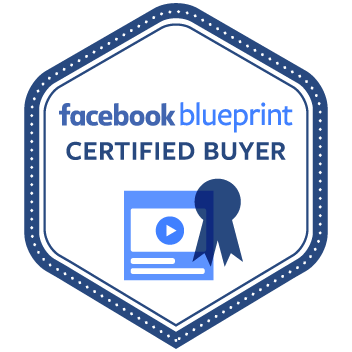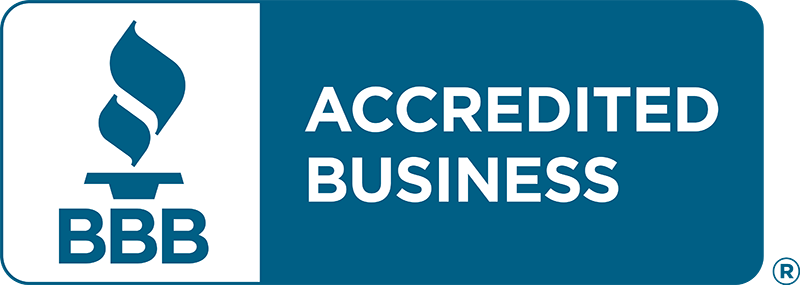
The Google Ad Grants application process can open new doors for your nonprofit. Understanding the steps involved is important for a successful outcome. This guide will help you prepare for and complete your Google Ad Grants application, aiming to secure the $10,000 monthly ad spend to amplify your mission. Are you ready to enhance your organization’s online visibility and impact through the grant application?
Table of Contents:
- What Are Google Ad Grants?
- Eligibility Requirements
- Preparing for the Google Ad Grants Application
- The Application Process
- Creating Your First Campaign
- Managing Your Ad Grants Account
- Common Pitfalls to Avoid
- Success Stories
- Conclusion
What Are Google Ad Grants?
Google Ad Grants provide eligible nonprofit organizations with $10,000 USD per month in in-kind advertising credit for Google Search. This translates to free advertising, allowing your message to appear alongside search results when people look for information related to your cause. Think of it as a powerful nonprofit megaphone, enabling you to reach a wider audience than might be possible through organic efforts alone or limited marketing budgets. The grant brings significant advantages, helping to level the playing field, especially for small nonprofits competing for attention.
This program is designed to help organizations attract donors, recruit volunteers, and raise awareness for their initiatives. The Google Ad Grant can be transformative, allowing you to connect with individuals actively searching for ways to support causes like yours, whether they are looking for an animal shelter, information on shelter volunteering, or other community services. Properly managed, this grant brings opportunities to significantly boost your web traffic and engagement with passionate supporters.
These ad credits apply to text-based ads displayed on the Google search engine results pages. This means your nonprofit can appear in front of people specifically looking for keywords related to your services, programs, or mission. It’s a fantastic way for nonprofit organizations to gain visibility without a hefty advertising budget, and the grant offers a continuous stream of potential engagement.
Eligibility Requirements
Before starting the Google Ad Grants application, it is important to confirm your organization meets Google’s grants eligibility criteria. Google has specific grant requirements to maintain the program’s integrity and effectiveness for participating nonprofits. Failing to meet these at the outset can lead to a rejected grant application.
Key Google Ad Grant requirements include:
- Being a registered charitable organization in good standing in your country. Google partners with TechSoup to verify nonprofit status, so you’ll typically need to be registered with them or their local partner.
- Acknowledging and agreeing to Google’s required certifications regarding non-discrimination and donation receipt/use. This means your organization must not discriminate on any unlawful basis and must handle donations transparently.
- Having a live website with substantial, unique content that clearly describes your nonprofit’s mission, programs, and activities. Your website is a critical component for both the application and the ongoing success of your ad campaigns.
Organizations like governmental entities or bodies, hospitals and medical groups, schools, academic institutions, and universities are generally not eligible. However, philanthropic arms of educational institutions may qualify. Always check the most current Google Grants eligibility guidelines directly from Google, as program details can change. A secure website with an SSL certificate is also a fundamental expectation for providing a good user experience.
To make the core eligibility points clearer, here’s a summary:
| Requirement Category | Details |
|---|---|
| Nonprofit Status | Must be a validly registered 501(c)(3) organization (in the U.S.) or equivalent in your country, verified by TechSoup. |
| Website | A high-quality, functioning website with substantial, original content. It must be secured with HTTPS (requiring an SSL certificate). |
| Mission & Operation | Must agree to Google’s certifications on non-discrimination and donation/ G_R_A_N_T_S_ work. |
| Ineligible Entities | Governmental entities, hospitals, childcare centers, K-12 schools, and academic institutions (philanthropic arms may be eligible). |
Preparing for the Google Ad Grants Application
Thorough preparation can streamline the Google Ad Grants application process. Taking these steps beforehand will set you up for a smoother journey and increase your chances of a successful grant application. It’s about getting your digital house in order before inviting Google in.
1. Google for Nonprofits Account
Your first step is to apply for a Google for Nonprofits account. This central hub provides access to various Google tools and services specifically for nonprofit organizations, including Google Workspace for Nonprofits, YouTube Nonprofit Program, and, importantly, Google Ad Grants. The Google for Nonprofits account verification can take several business days, so start this process early.
Once your Google for Nonprofits account is approved, you can then proceed to activate specific products like the Ad Grants program. This account acts as the gateway for your grant application and future management. This is a foundational step in the grant application process.
2. Google Analytics
Setting up Google Analytics (GA4) on your website is essential. Google requires Ad Grantees to have Google Analytics installed and properly configured to track website performance and the impact of their ads. You’ll need to link your Google Analytics account to your Google Ads account once it’s created.
Google Analytics allows you to understand how users interact with your site, what content is most engaging, and how your ad campaigns are driving traffic. It helps measure conversions, such as donation form completions, volunteer signup submissions, or newsletter subscriptions. This data is crucial for optimizing your Google Ads account and demonstrating the value of the grant.
3. Website Compliance
Your website must meet Google’s standards for quality and user experience. This includes having a robust website with substantial unique content detailing your mission, activities, and finances. Your site must load quickly, be easy to navigate, and clearly state your organization’s purpose. Ensure you have an SSL certificate installed, meaning your website address starts with “https://” – this is a firm requirement.
The content should be more than just a few blog posts; think detailed program descriptions, impact stories, transparent governance information, and clear calls to action for volunteer opportunities or donations. A poor user experience or thin content can lead to application rejection or account suspension later. Google requires this to ensure that the traffic sent via ads lands on useful, high-quality pages.
The Application Process
With your preparations complete, you are ready to begin the Google Ad Grants application. The grant application process itself is managed through your Google for Nonprofits account. Follow each step carefully for your ads account.
1. Submit Your Application for the Grant
Log in to your approved Google for Nonprofits account. Navigate to the Google Ad Grants section and click the activation or “Get Started” button. You will be guided through a series of steps to enroll in the Ad Grants program.
This part involves confirming your organization’s details and agreeing to the terms of service. The system will check your eligibility again based on the information in your Google for Nonprofits account. This is the official start of your Google grant application.
2. Complete the Pre-qualification Survey (Part 1 of Activation)
As part of the activation, Google will typically present a pre-qualification survey or an eligibility assessment. This involves answering questions about your organization, its mission, and how you plan to use the Google Ad Grant. Be thoughtful and accurate in your responses, as this helps Google understand your needs and goals for the grants account.
This assessment is crucial for Google to verify your organization’s suitability and understanding of the program’s objectives. Honesty and clarity here are important. This is a key stage of the grants application.
3. Set Up Your Google Ads Account (Part 2 of Activation)
Once you pass the initial eligibility check and survey, you will be prompted to create a new Google Ads account specifically for the Ad Grant. It is critical that you follow Google’s instructions precisely for setting up this Google Ads account. Do not use an existing Google Ads account unless explicitly told to do so by Google, and do not enter any billing information – the grant covers your ad spend.
The account setup must adhere to specific guidelines, such as currency settings and ensuring it’s not linked to a manager account initially in a way that bypasses Ad Grants rules. Failure to configure the ads account correctly can lead to delays or rejection. This Google Ad Grant account will be where all your ad campaign activity takes place.
4. Submit for Review and Complete Training
After setting up your Google Ads account according to the guidelines, you’ll submit its ID back into the Google for Nonprofits platform for final review. This review process can take several business days. Once approved, your account will be live, and the $10,000 in ad credits will be available.
While not always mandatory to start, Google provides Ad Grants training materials and may require you to complete certain policy training. Completing this training is highly recommended as it covers essential program policies, account management best practices, and tips for creating effective ad campaigns. Understanding how Google Ad Grants work will maximize your benefit.
Creating Your First Campaign
Once your Google Ad Grants account is approved, it’s time to create your first ad campaign. A well-structured ad campaign is key to making the most of your monthly ad credits and driving traffic to your site. This is where your strategy for using the Google Grant comes to life.
- Choose keywords relevant to your nonprofit’s mission, services, and the terms your target audience uses on the Google search engine. Think about what people would type into Google search to find an organization like yours or to get involved with your cause, like “animal shelter volunteering” or “donate to environmental protection.” Focus on specific, longer-tail keywords rather than very broad terms initially.
- Write clear and compelling ad copy. Your ads should be engaging, clearly state what your organization does, and include a strong call to action, prompting users to visit your site to donate, volunteer, or learn more. An effective ad group will have ads that closely match the keywords within it.
- Create specific landing pages that align directly with your ad copy and keywords. If your ad is about volunteer opportunities, the landing page should provide information about volunteering and include a volunteer signup form. A good user experience on the landing page is critical for conversion.
- Set up conversion tracking in Google Analytics and import these goals into your Google Ads account. This allows you to measure the success of your ads by tracking actions like donations, newsletter sign-ups, or downloads of resources. Tracking helps demonstrate the impact the grant brings.
Remember, your ads should focus on your nonprofit’s mission and programs. Commercial intent is generally disallowed; for example, you typically cannot sell products or services unless 100% of the proceeds directly support your programs. When building your ad campaigns, consider running multiple campaigns simultaneously to target different aspects of your mission or various calls to action, such as promoting events or sponsorship opportunities.
Managing Your Ad Grants Account
Securing the Google Ad Grant is just the beginning; active management of your ad grants account is vital for continued success and compliance. Google requires grant recipients to maintain certain performance standards. Neglecting your grant account can lead to suspension, so ongoing attention is necessary for your Google Ad Grant account.
Key management tasks include:
- Regularly reviewing and updating your keywords. Add new relevant keywords, pause underperforming ones, and add negative keywords to prevent your ads from showing for irrelevant searches. This helps improve your Quality Score.
- Monitoring your ad performance closely. Pay attention to metrics like click-through rate (CTR), conversion rate, and overall web traffic driven by the ads. Make adjustments to ad copy, bids (even though it’s free, effective bidding strategies apply), and targeting based on this data.
- Maintaining a click-through rate (CTR) of at least 5% account-wide for two consecutive months. If your CTR drops below this, your account could be suspended. This Google requires to show that your ads are relevant and engaging to users.
- Logging into your Google Ads account at least monthly and making at least one change every 90 days. This demonstrates active management. This ensures your grant account stays active.
- Ensuring your campaign structure is logical with specific ad groups for tightly themed keywords. Each ad group should have at least two active ads.
- Utilizing at least two sitelink ad extensions. These provide additional links in your ads, improving visibility and CTR.
Google provides resources, including a help center and community forum, to support grantees. If managing the account becomes overwhelming, consider seeking help from a specialized grants agency. Consistent management helps the Google Ad Grants work effectively for your nonprofit organization, allowing you to continually promote events and gather passionate supporters.
Common Pitfalls to Avoid
While the Google Ad Grants application process and ongoing management are manageable, several common pitfalls can trip up nonprofits. Being aware of these can save you time and frustration, helping your ad grant journey be smoother. Avoiding these is part of making the Google grant work for you.
- Not providing enough detail about your organization in your initial Google for Nonprofits application or the Ad Grants activation survey can lead to delays or misunderstandings. Be clear and comprehensive.
- Failing to set up conversion tracking correctly is a major missed opportunity. Without it, you cannot measure the true impact of your ads or optimize effectively. This is vital for your Google Ads account.
- Using single-word or overly generic keywords wastes your ad spend on irrelevant clicks and often results in a low Quality Score and CTR. Be specific with your keyword targeting. For example, instead of “charity,” try “donate to local food bank.”
- Neglecting to actively manage your ad grants account after approval is a common reason for suspension. The 5% CTR requirement and monthly login rule are strictly enforced. Consistent Ad Grants work is necessary.
- Having a poorly structured Google Ads account with too few campaigns or ad groups, or ad groups with mismatched keywords and ads, will lead to poor performance. A logical structure is essential.
- Linking to low-quality landing pages or pages that don’t align with the ad copy results in a bad user experience and low conversion rates. Ensure your website pages offer value and are relevant to the search query.
- Not having an SSL certificate (HTTPS) on your website. This is a basic requirement for trust and security that Google enforces.
- Violating ad policies, such as using overly sensational ad copy or making unsupported claims, can lead to ad disapprovals or account suspension.
By sidestepping these common errors, you’ll significantly improve your chances of a successful grant application and long-term program participation. Understanding the grant requirements is ongoing. Many nonprofit organizations find that a dedicated focus on these areas yields better results from their grant offer.
Success Stories
Numerous nonprofit organizations have achieved remarkable results using the Google Ad Grant. For instance, the World Wildlife Fund utilized their Google Ad Grants to significantly boost online donations and engagement with their conservation campaigns. They focused on specific keywords related to endangered species and environmental protection, driving qualified traffic to their donation form and informational pages.
A smaller, local animal shelter might use its grant to promote specific animals needing homes, recruit volunteers for shelter volunteering, or advertise local fundraising events. By targeting geographically relevant keywords, they can connect directly with their community, increasing adoptions and support. The Google Ad Grant brings these vital connections within reach for small nonprofits and larger entities alike.
These examples illustrate the potential of the Google Ad Grant offer when coupled with strategic campaign management. It’s a powerful tool for driving traffic, raising awareness, and achieving tangible outcomes, from increased donations to more volunteer signups. The grant can indeed be a nonprofit megaphone, amplifying your voice in the crowded online space and helping you find passionate supporters.
Conclusion
The Google Ad Grants application process, while detailed, presents an invaluable opportunity for nonprofits. Securing and effectively managing the $10,000 monthly in-kind advertising can significantly extend your reach and help achieve your mission-driven goals. From increasing web traffic for volunteer opportunities to boosting completions of your donation form, the benefits are substantial.
Remember to thoroughly prepare by setting up your Google for Nonprofits account and Google Analytics, and ensuring your website meets Google’s standards, including having an SSL certificate. Follow the application steps carefully, and once approved, commit to active account management. By focusing on relevant keywords, compelling ad copy, a strong user experience, and adhering to Google’s policies, your nonprofit organization can harness the full power of the Google Ad Grant, making a real difference. Good luck with your Google Ad Grants application and leveraging this fantastic grant offer.










